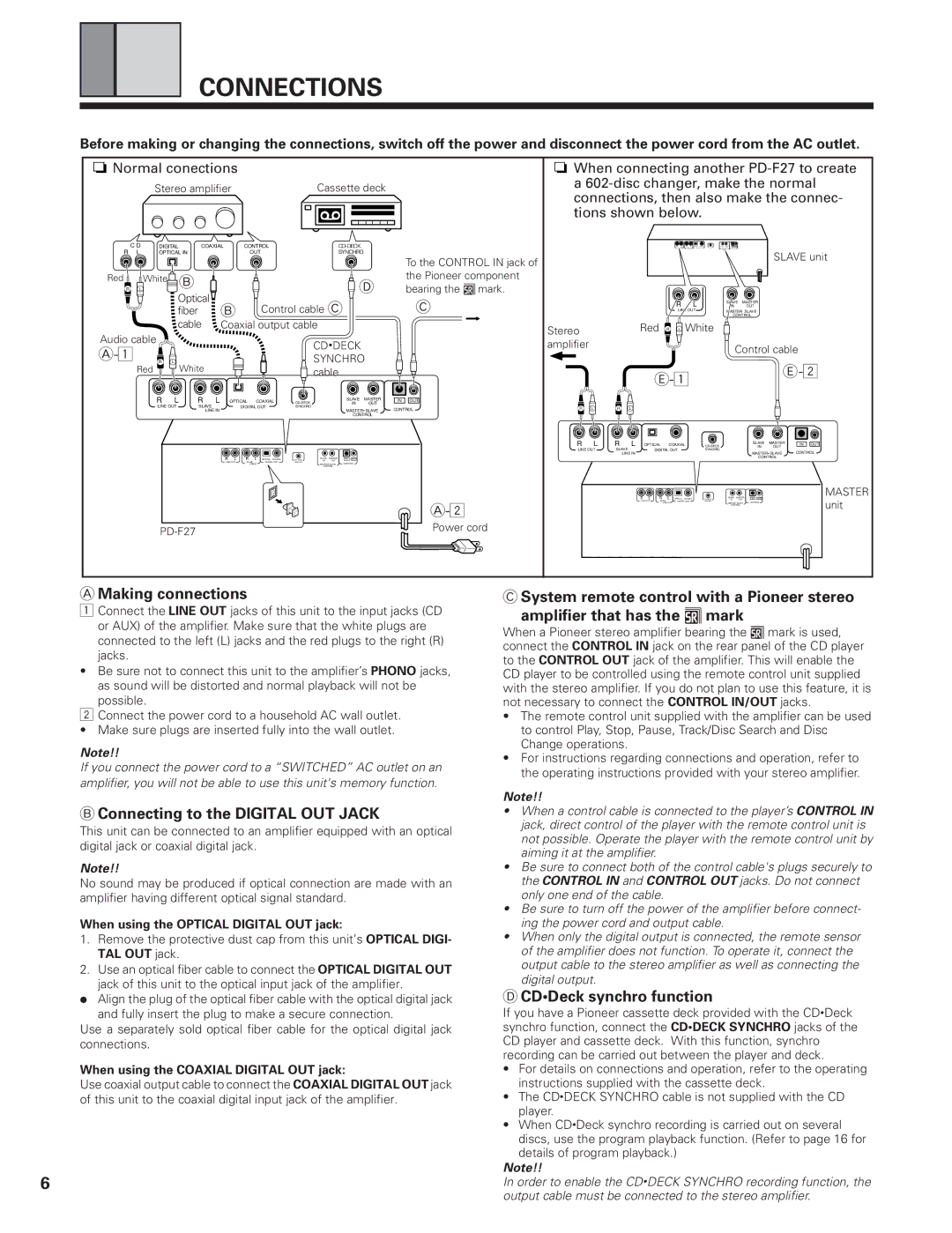PD-F19PD-F27 specifications
The Pioneer PD-F19 and PD-F27 are notable members of the Pioneer CD player lineup, well-regarded for their reliability and robust performance. These models are designed to cater to audiophiles who appreciate quality audio reproduction and user-friendly features.The PD-F19 is recognized for its innovative Multi-CD carousel design, allowing users to load up to 6 CDs at once. This feature not only enhances convenience but also ensures that listeners can enjoy extended playback without interruption. The unit supports a variety of disc formats, including CD-DA, CD-R, and CD-RW, making it versatile for different music collections.
The PD-F27 takes this convenience a step further by integrating advanced digital processing technologies. It features a high-quality 1-bit DAC (Digital-to-Analog Converter), which significantly reduces distortion and improves audio clarity. This technology ensures that the sound quality is crisp and detailed, allowing users to appreciate the nuances in their favorite tracks.
Both models include direct track access and programmable playback options, giving users greater control over their listening experience. The PD-F27 is equipped with a more sophisticated remote control, offering additional functionalities for ease of use. The inclusion of a large, informative display on both models provides essential information at a glance, such as track number, elapsed time, and remaining time.
Additional features of the PD-F27 include a seamless repeat function, which caters to those who want to listen to specific tracks or albums on loop. The anti-vibration chassis design is another critical characteristic that contributes to sound quality by minimizing unwanted resonances and enhancing playback stability.
In terms of connectivity, both models come with analog outputs, allowing users to connect to a variety of audio systems easily. The PD-F27 may also offer digital outputs, enabling connection to external DACs and modern audio equipment, further enhancing versatility.
Overall, the Pioneer PD-F19 and PD-F27 CD players exemplify the brand's commitment to superior sound quality and user-centric design. With their unique features and robust performance, they remain valued choices for enthusiasts looking to enrich their audio experience.

